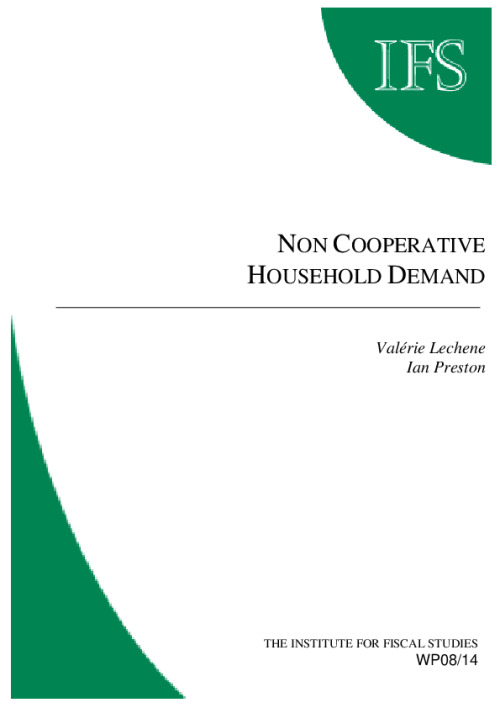Downloads

wp0814.pdf
PDF | 254.7 KB
<p><p><p>We study noncooperative household models with two agents and several voluntarily contributed public goods, deriving the counterpart to the Slutsky matrix and demonstrating the nature of the deviation of its properties from those of a true Slutsky matrix in the unitary model. We provide results characterising both cases in which there are and are not jointly contributed public goods. Demand properties are contrasted with those for collective models and conclusions drawn regarding the possibility of empirically testing the collective model against noncooperative alternatives and the noncooperative model against a general alternative.</p></p></p>
Authors

Research Fellow University College London
Ian is a Research Fellow of the IFS and a Professor of Economics at UCL. He joined UCL in 1991 and has been attached to the IFS since 1990.

Research Fellow University College London
Valerie, a Research Fellow of the IFS, is a Reader at the University College London, whose research is focused on modelling intra-household behaviour.
Working Paper details
- DOI
- 10.1920/wp.ifs.2008.0814
- Publisher
- IFS
Suggested citation
Lechene, V and Preston, I. (2008). Non cooperative household demand. London: IFS. Available at: https://ifs.org.uk/publications/non-cooperative-household-demand (accessed: 9 May 2024).
More from IFS
Understand this issue

Sure Start achieved its aims, then we threw it away
15 April 2024

Social mobility and wealth
12 December 2023

How important is the Bank of Mum and Dad?
15 December 2023
Policy analysis

Living standards since the last election
21 March 2024

Major challenges for education in Wales
21 March 2024

Sliding education results and high inequalities should prompt big rethink in Welsh education policy
21 March 2024
Academic research

Labour market inequality and the changing life cycle profile of male and female wages
15 April 2024

Saving by buying ahead: stockpiling in response to lump-sum payments
2 February 2024

There and back again: women’s marginal commuting costs
2 April 2024